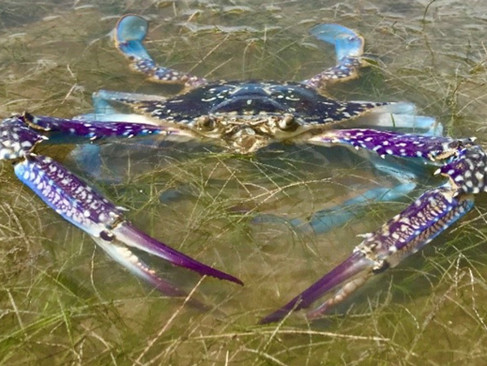The story of Townsville’s seagrass has been one of boom and bust over the last two decades, as meadows have been hit by floods, cyclones, and heatwaves — only to recover and regain resilience in the years between.
How do we know? It’s thanks to the many people who fly helicopters, dive, snorkel, and pilot drones and underwater cameras to track the changing condition of our many seagrass meadows.
For 17 years our partners Port of Townsville and JCU TropWATER have collaborated to monitor the health of seagrass in our Cleveland Bay and Magnetic Island/Yunbenun. A Long-term Seagrass Monitoring Program (LTSMP) was established in 2007 and sees specialists assess more than 1,000 sites across up to 25,000 hectares of seagrass meadows in our local area.
Monitoring answers fundamental questions about seagrass condition: Is seagrass present? What is the spatial footprint of the meadow? How dense is the seagrass? What species define the meadow?
Health or condition indicators are graded against long-term baseline conditions, and the community of Townsville and operators in the Bay can track the health of these keystone plants.
Why seagrass is on everyone’s lips
“The Great Barrier Reef is considered a global hotspot for seagrass,” says our Technical Officer, Adam Shand. “There are 11 species found in the Townsville area and in total, seagrasses cover even more of the GBR than corals.”
Globally, seagrasses are celebrated as the ‘secret agents’, and ‘hidden guardians’ of coastal waters. They absorb almost 18% of the world’s oceanic carbon, provide nourishment and protection for a myriad of species, help reduce water pollution, and stabilise the seafloor.
Dugong feeding trails leave evidence of snacking off The Strand. An adult dugong eats up to 30 kg of seagrass a day!
So important are seagrasses, the UN even holds a global World Seagrass Day on 1 March, raising awareness that seagrasses have been declining globally since the 1930s. Affected by coastal development, pollution, climate change, dredging, and unregulated fishing and boating activities — seagrasses are a sensitive lot — making Cleveland Bay’s ‘good’ health grades of recent years cause for celebration.
Elsewhere along the Great Barrier Reef, seagrass restoration projects seek to revegetate meadows that have experienced long-term decline, and large-scale citizen science projects are seeing locals get stuck into replanting seedlings, often by hand.
Townsville’s tumultuous seasons
Due to the delicate nature of seagrasses, their condition scores can fluctuate every year.
Data collected through the collaborative monitoring program showed our local meadows took a significant hit in 2011 from Tropical Cyclone Yasi and other factors, but the 2023 Townsville Dry Tropics Waterways Report Card, which reports on data collected in 2021-2022, saw the seagrass receive ‘Good’ grades. Analysis of the following year’s monitoring program, as well as the impact of 2024’s TC Cyclone Kirrily, will be available in coming months.
“Climate conditions are outside of our control, but there are many more factors that we can influence for the wellbeing of our seagrasses,” says our Executive Officer, Kara-Mae Coulter-Atkins.
“Improving the water quality coming from our rivers and land runoff is a great place to start, and our Townsville Waterways Report Card points to the places we need to be targeting to see this achieved.”
The next update on Cleveland Bay’s seagrasses will be shared in the 2024 Waterways Report Card, due to be released mid-this year.
Until then, be sure to wave to the JCU TropWATER helicopters as they monitor the seagrass off Townsville through the year — important work done by good people.
Learn more about the state of Cleveland Bay’s seagrasses in our Guardians of the Bay StoryMap, in the Habitat Insights from our 2023 Waterways Report Card, and on the Port of Townsville’s Monitoring in Cleveland Bay resources.












